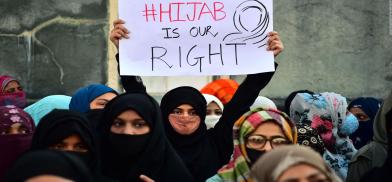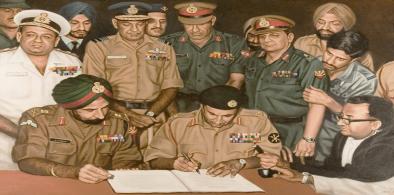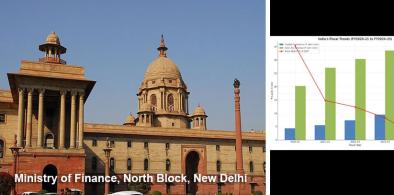Indian hijab row: Muslims should not get trapped in communal snares
With the help of pliant media, saffron powers have discredited Muslims as an obstacle to the country's development and an enemy of equality, secularism and women's rights, writes Sohail Ahmad for South Asia Monitor

In Europe and the West, the hijab is predominantly considered to be an anti-civilization element. It is regarded synonymous to a symbol of stereotypes, ignorance and narrow-mindedness by the non-Muslim community. Today, Islam, the Prophet, mosques, Islamic centres, modest clothing and hijab are being targeted in many countries more than ever before. The negative trend has seen a drastic rise in India.
Recently, an incident took place at a school in the southern state of Karnataka where Muslim girls were not allowed to wear the hijab by the school administration. A minor incident snowballed into an escalated issue of unjustifiable and biased propaganda. The outraged students protested, asserting themselves in most passionate words: "No one has the right to take away the hijab from us." Even on a legal front, forcibly preventing girls from entering college without prior notice or logic violates fundamental principles of the rule of law.
Hijab is not a ritual or fashion to a large section of Muslims nor is it a declaration of war against any other religion or civilization. Instead, its purpose is not only to cover a woman's body but it’s a way of life.
Muslim women
Hindus in India are accustomed to seeing women wearing hijab or burqa. They may have an opinion about the practice, but it has never disrupted public order. Some may find it orthodox, others backward, regressive and oppressive, but this is about the woman who chooses to wear it and should not be anyone else's business.
To the state, prohibiting hijab invokes the principle of equality. But the question is how does the hijab create inequity in a classroom? How and why should those not wearing a hijab feel unequal or discriminated against? For example, do Hindus believe that wearing a hijab is an extra privilege that they do not have and, as a result, it makes them feel inferior?
Why don't people explain how women wearing hijab bother them and how it affects their freedom in educational institutions? This type of clothing has been in practice for ages and is constitutionally protected. Instead, these people express their displeasure with an approach that has no bearing on them.
Obviously, saffron powers want to keep Muslim women away from education. At the same time, they want to distort the image of Muslims by aggravating this issue. With the help of pliant media, saffron powers have discredited Muslims as an obstacle to the country's development and an enemy of equality, secularism and women's rights. They are portrayed as followers of superstition, hypocrisy and religious extremism.
Saffron onslaught
They do so deliberately so that Muslims do not think about their progress; all their potential and precious time is wasted in either saving their lives or acquitting themselves of baseless denunciations. To add insult to injury, women's rights have been the main agenda of the saffron powers to satisfy their own ulterior motives.
Many people were disappointed by the interim order issued by the Karnataka High Court, which asked whether Hijab is an "essential religious practice" or not. Instead, the court should consider whether the state has the right to deny women access to education if they choose to cover their heads or faces. The court not only disregards the rights of Muslim female students but also fails to inquire as to why the state wishes to prohibit hijab. Even the correct answer to the incorrect question will not help us get out of this mess.
To be clear, the women were in court to dispute educational institutions' and the state government's acts that restrict their access to education. The state has not challenged the hijab in front of the constitutional court. As a result, the focus of scrutiny should be on the state action, which is the subject of the writ petitions, on its own merits. The court and public discourse have focused on women's choices.
The long-term plan of the saffron powers is to push the Muslim students into the well of illiteracy. The saddest thing is that some liberals and feminists either do not understand the whole game or deliberately do not want to understand. So they often blame the oppressed and make the work of saffron powers easier.
Bury communalism
Undoubtedly, it is just another attempt to corner and subjugate the free will of the minority population that is now being urged on a daily basis to subsume itself into a "mainstream" paradigm.
Ironically, instead of creating job opportunities for youth and utilizing their potential in the nation's advancement, the culpable speech of politicians and TV debates today are misleading and instilling hatred among youngsters. This is because communalism has always been the lifeblood of politicians. Be it an issue of Ram Mandir, Azaan, Namaz, Talaq, Hijab or even the Mughals, politicians have always thrived on issues that divide people for their political gain. Thus, it is high time to give communalism a final goodbye.
Actually, it is an effort to push Muslims to the margins further. Therefore, the community intellectuals should act wisely and avoid getting trapped into any such snares that may affect society adversely. It is high time for the Muslim intelligentsia to ponder upon how the Muslim community had a phased transition from socially preferred to socially untouchable in 100 years.
Despite such moments, the cornered minorities place their trust in the secular dispensations of a republican constitution as determined by the courts of law. Minorities fester in their strangulated existence if and when they fail to uphold that order, and sometimes revolt with consequences too terrifying to contemplate.
(The writer is an educationist, a faculty member at King Khalid University, Abha, Saudi Arabia. Views are personal. He may be contacted at sohailphysics@yahoo.co.in)




















Post a Comment